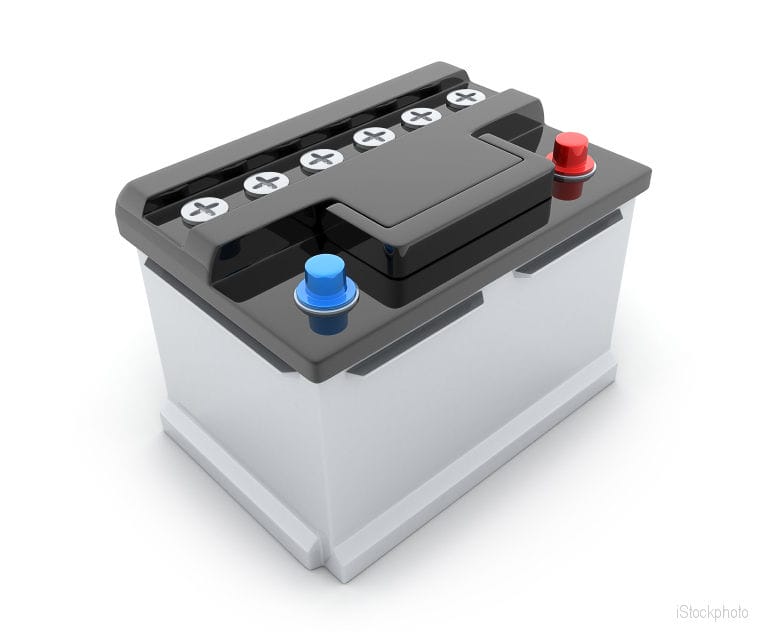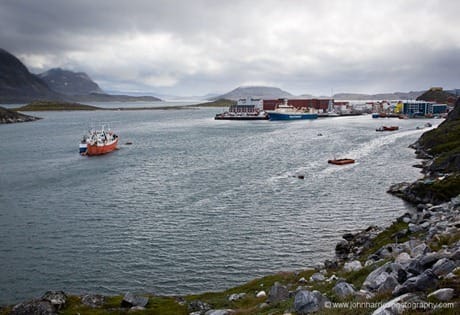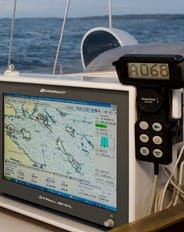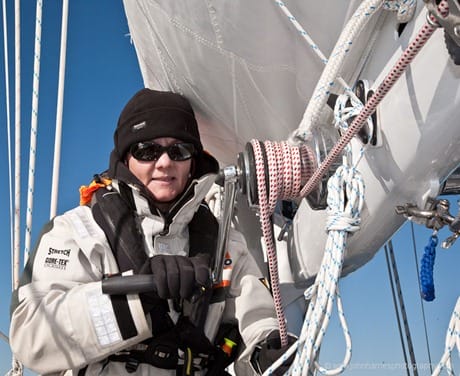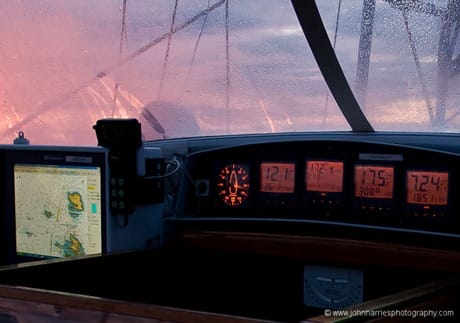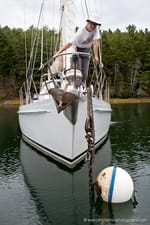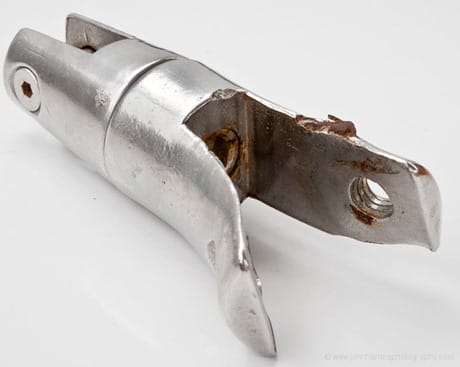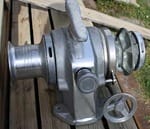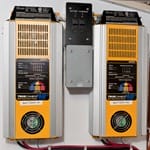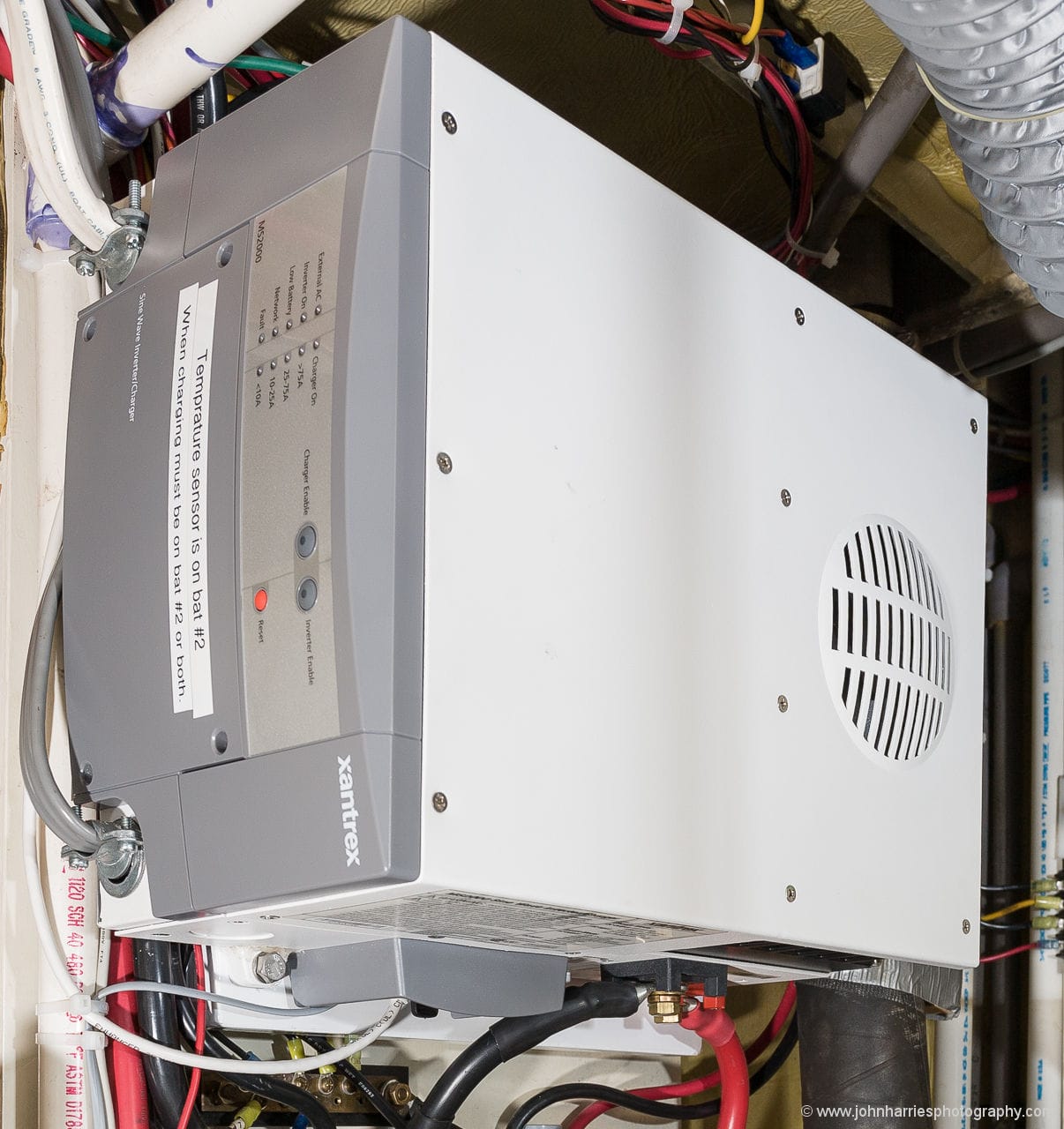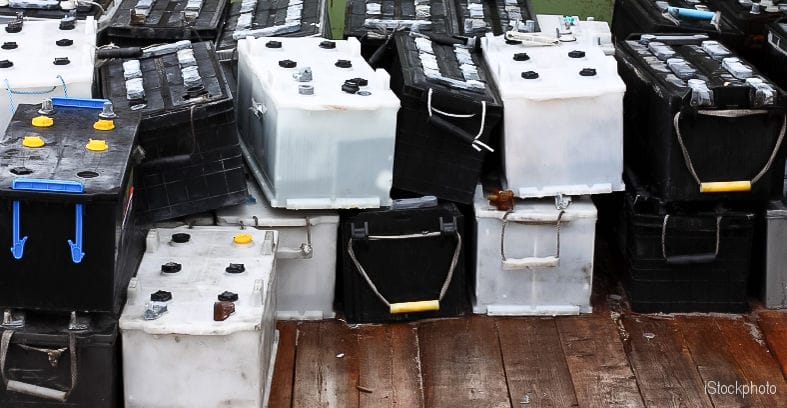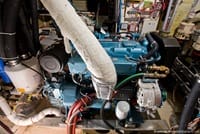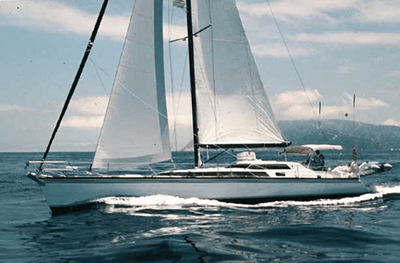-
11 Steps To Better Lead Acid Battery Life
76 CommentsReading Time: 4 minutesFreeRead more: 11 Steps To Better Lead Acid Battery LifeIn the last chapter, we quantified how short battery life will be on a cruising boat with a standard electrical system, now let’s move on to fixing that.
-
How To Use An Anchor Trip Line
27 CommentsReading Time: 3 minutesMembersRead more: How To Use An Anchor Trip LineJohn writes about how we rig an anchor trip line on Morgan’s Cloud.
-
The Beauty Of Simplicity
24 CommentsReading Time: 5 minutesMembersRead more: The Beauty Of SimplicityToday our boats are more complex than ever before. And yes, there are benefits that go along with some of this complexity. But, as a general rule, simple is almost always more seamanlike than complicated.
-
A Hidden Gem, Cape Lookout Harbor
8 CommentsReading Time: < 1 minuteFreeRead more: A Hidden Gem, Cape Lookout HarborBeing too tall for the Intracoastal Waterway has its advantages, as stumbling on this stunning anchorage proves.
-
Anatomy Of An Accident
22 CommentsReading Time: 3 minutesFreeRead more: Anatomy Of An AccidentIt was 4:00 am on a black early morning anchored at Cape Lookout Harbour when Phyllis and I were awoken by a crash from up forward followed by a sickening scraping sound. A quick look out the companionway showed the outline of another sailboat reversing away from our bow. The outline looked a lot like […]
-
Reefing Made Easy
110 CommentsReading Time: 5 minutesFreeRead more: Reefing Made EasyHow to reef a sailboat easily and quickly without getting frightened or wet.
-
Racing To Cruise
17 CommentsReading Time: 5 minutesFreeRead more: Racing To CruiseRacing sailboats is a great way to gain experience that will be invaluable when we go offshore cruising. John shares a passage across the Gulf of Maine.
-
Cutting The Ties That Bind
38 CommentsReading Time: 2 minutesFreeRead more: Cutting The Ties That BindFor various reasons we spent most of the summer at our cabin in Nova Scotia, working way too much and sailing way too little. While preparing to get back out cruising, we were once again reminded of the difficulties and sheer work of leaving a land base: Get car ready for storage, store same, move […]
-
Perkins M92B, Initial Report Card
39 CommentsReading Time: 3 minutesMembersRead more: Perkins M92B, Initial Report CardInstalling the new engine was a huge and expensive job, so how did it work out?
-
Nexus Instruments, Great Gear And Great Culture
8 CommentsReading Time: 2 minutesFreeRead more: Nexus Instruments, Great Gear And Great CultureReasonably Priced Seven years ago, when KVH stopped supporting our previous sailing instrument system, we looked at Brooks and Gatehouse but balked at the cost and instead settled on a new NX2 system from Nexus at less than half the price.
-
Equalizing Batteries, The Reality
53 CommentsReading Time: 5 minutesMembersRead more: Equalizing Batteries, The RealityFully charging your batteries after each discharge on a live-aboard cruising sailboat is simply not practical. Instead, most of us will cycle our batteries between 50 and 80% of their capacity. The bad news is that this will ruin your lead-acid batteries (regardless of type) in a distressingly short time due to sulphation. However, there is a solution: equalization. In this chapter we cover what it is and how to do it.
-
Storm Preparation, All Chain On Deck
48 CommentsReading Time: 4 minutesMembersRead more: Storm Preparation, All Chain On DeckWhat with spending a lot of time in the high latitudes and keeping boats on moorings year round in Bermuda, John has a lot of experience dealing with heavy weather while anchored or on a mooring. In this chapter he gives some tips for preparing your boat to safely ride out a storm.
-
Anchor Swivels, Just Say No
58 CommentsReading Time: 3 minutesMembersRead more: Anchor Swivels, Just Say NoWe have never seen the point of anchor swivels. In our opinion all they do is add a potential point of failure to the anchoring system and provide no benefits in return. But they are, in fact, even more dangerous than we thought. In this chapter we explain why and even tell you how to ameliorate the danger if you really must have a swivel.
-
Q&A: Hybrid Rope And Chain Anchor Rodes
48 CommentsReading Time: 2 minutesMembersRead more: Q&A: Hybrid Rope And Chain Anchor RodesMany anchoring experts advocate hybrid anchor rodes made up of a long length of chain attached to an even longer piece of rope. But is this really a good idea? We examine the practical real world issues in this chapter.
-
Earl Comes To Lunch
2 CommentsReading Time: < 1 minuteFreeRead more: Earl Comes To LunchHurricanes, you just can’t trust em. When we went to bed Earl was supposed to make landfall on the west side of the province, some 80 miles away. But this morning he has wobbled east and is heading straight for us here on the southwestern shore of Nova Scotia.
-
AC Chargers For Lead Acid Batteries
31 CommentsReading Time: 4 minutesMembersRead more: AC Chargers For Lead Acid BatteriesMost marine battery chargers are, in fact, battery killers. Yes, that includes most of the fancy three stage units we all pay so much money for. Here’s why and what to do about it.
-
Hurricane Forecasts, Sausage Or Sizzle
8 CommentsReading Time: 2 minutesFreeRead more: Hurricane Forecasts, Sausage Or SizzleIt is now pretty likely that Hurricane Earl will give us high winds here on the south-western shore of Nova Scotia. However, a deviation of just 50 miles either side of the forecast track will likely make the difference between us experiencing gale force versus hurricane force winds. And that in turn will determine whether […]
-
Hurricane Resources
3 CommentsReading Time: 3 minutesFreeRead more: Hurricane ResourcesI have lived most of my life in the direct line of fire of Atlantic hurricanes, first in Bermuda, and now on the southern shore of Nova Scotia. But no matter how familiar I am with the damned things, or perhaps because of that familiarity, I always have a slight feeling of constant tension at […]
-
Inverters And Chargers
27 CommentsReading Time: 3 minutesFreeRead more: Inverters And ChargersCombined inverters and chargers have become pretty much standard on cruising sailboats but, in fact, that’s a really bad idea. In this chapter we will share why and what to do about it.
-
Always Have A Way To Rest
9 CommentsReading Time: < 1 minuteFreeRead more: Always Have A Way To RestThere is so much about this story (originally reported in Cruising Compass but no longer available) that worries me that it is hard to know where to start: A single-handed sailor abandoned his boat because he was totally exhausted from three days of hand steering, not because there was anything wrong with the boat.
-
How Lead Acid Batteries Get Wrecked and What To Do About It
68 CommentsReading Time: 5 minutesMembersRead more: How Lead Acid Batteries Get Wrecked and What To Do About ItRegularly equalizing our lead-acid batteries can save us a lot of money and aggravation by extending their useful lives as much as five times.
-
Engine Installation—The Devil Is In The Details
33 CommentsReading Time: 7 minutesMembersRead more: Engine Installation—The Devil Is In The DetailsJohn, who has done three of them, fervently hopes that this will be his last repower. Read along as he spends three months fulltime at one of the best diesel repower shops in the world, sweating the details to make this installation the best it can be.
-
Love Of The Ocean And The Real Price Of Oil
21 CommentsReading Time: 3 minutesFreeRead more: Love Of The Ocean And The Real Price Of OilI have, with a few short breaks, lived either on, or within a stone’s throw, of salt water all my life. My earliest childhood memories are of commuting by boat from a small island where we lived to a larger island called Bermuda. I have spent the majority of the last twenty years voyaging on […]
-
Q&A: Propeller Shaft Rope Cutters
22 CommentsReading Time: 2 minutesFreeRead more: Q&A: Propeller Shaft Rope CuttersQuestion: Do you have a rope cutter? I ask because we are thinking of fitting an Ambassador Stripper (stainless) to a new build alloy [aluminum] yacht with an alloy sterntube, and we wonder if it is possible to get the two to live happily together.
